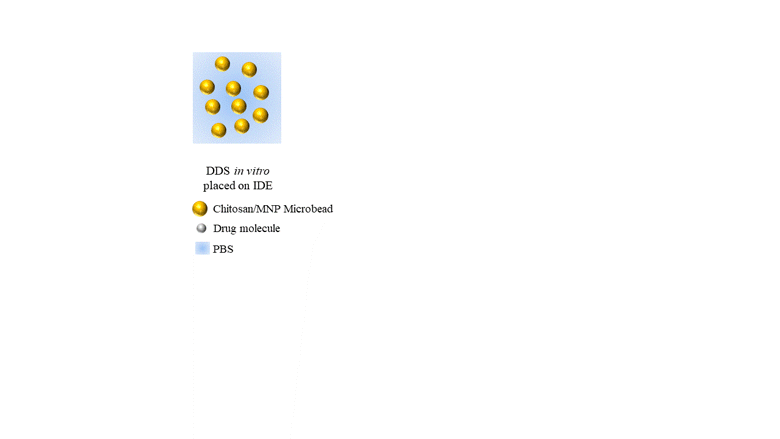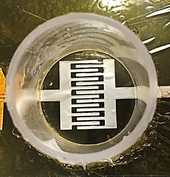
Direct drug administration has several shortcomings, for eg, poor target localization and specificity, opsonization, undesired systemic exposure, etc. Stimuli controlled Drug Delivery Substrates (DDS) not only sterically shield the drug from premature renal flushing, but also introduce the possibility of finely tuning the dosage profile as demanded by the patient’s requirements. In this work, we explored electric pulses as a stimuli technique to induce higher release of vancomycin from a DDS. The DDS is a microbead formulation of chitosan and magnetic nanoparticles and its properties were confirmed by detailed characterization tests. A MEMS inkjet material deposition printer was used to print silver electrodes on a flexible, thin and biocompatible polyimide substrate. This particular printing method was chosen because it does not require expensive or complicated fabrication procedures, and is simple enough to be quickly redesigned and adapted to the implantation site or tissue. The electric pulses were applied to the DDS through these printed silver electrodes for 3 mins. The results showed that the stimulated groups eluted 800% more vancomycin than the groups that did not receive any stimulation. This approach is the first of its kind in this research area and holds promises of being a viable method for designing controllable DDS systems that are also implantable in vivo. We modeled and studied the DDS system with COMSOL® to understand ion migration and electric fields that provide key insights into the actual mechanisms causing drug release.

